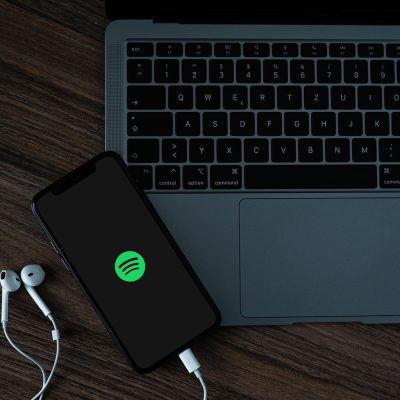The Harsh Reality of Spotify for Independent Artists
 Temps de lecture/Reading time : 3 minutes
Temps de lecture/Reading time : 3 minutes
Since its creation, Spotify has established itself as the dominant player in music streaming. For millions of listeners, the platform has become synonymous with accessible, instant, global music. But behind this success story lies a much darker reality, especially for independent artists. In 2024, Spotify reached a decisive turning point: the massive demonetization of the least-listened tracks. This economic shift, combined with an overwhelming algorithm, controversial investment choices, and the growing control of major labels, is weakening the entire musical ecosystem. Far from supporting diversity and creativity, Spotify today seems to be turning away from its cultural mission.
This article takes a close look at this major turning point, analyzing the platform’s recent decisions, their consequences, and possible alternatives.
A demonetization that marginalizes the majority of artists
In 2024, Spotify profoundly changed its payment system. From now on, tracks generating fewer than 1,000 streams per year receive no compensation. Officially, this decision aims to combat artificial streaming and to reinvest money where “listening is real.” In reality, this reform has excluded around 87% of the tracks on the platform from receiving any revenue.
Practically, this means the vast majority of artists — those without massive visibility, or those working in creative niches — no longer earn any income for their work, even if their songs are listened to by hundreds of people each year.
This policy mechanically favors already well-established productions, often supported by large entities. For emerging artists, independent composers, and local musicians, this reform amounts to economic disqualification. The implicit message is clear: only what performs according to the algorithm’s criteria is entitled to payment.
An algorithm that shapes and impoverishes listening
One of Spotify’s core models is algorithmic personalization. Automated playlists, recommendations based on listening history, suggestions linked to users’ global habits — everything is designed to maintain attention and maximize time spent on the platform.
But this system has a downside. By promoting the most popular or “compatible” tracks with the average profile, the algorithm tends to homogenize tastes. The most experimental, singular, or atypical artists are marginalized.
The case of The Velvet Sundown says a lot about Spotify’s direction: an entirely AI-created “band,” propelled to over a million listeners thanks to the algorithm, with no transparency about its artificial nature. Such an operation, quietly conducted, raises serious ethical questions about the platform. By contrast, Deezer has taken a stand by declaring it will exclude content generated by AI.
The revenue-sharing model, known as “pro-rata,” reinforces this logic: subscribers do not pay the artists they listen to but contribute to a global pool redistributed according to the total number of streams. This means that even if a subscriber only listens to independent artists, their money mostly goes to the biggest commercial successes.
In this system, musical diversity becomes superficial. The economic reality remains crushing for creators who step outside mainstream norms.
Strategic choices against artistic ethics
Spotify is not just transforming how music is consumed; the company is redefining its strategic priorities. Since 2021, Daniel Ek, Spotify’s CEO, has personally invested more than one billion euros in military technologies via the investment firm Prima Materia.
One of his most controversial involvements concerns Helsing, a startup specializing in AI applied to defense, including real-time battlefield analysis. In 2025, Ek participated in a 600 million euro fundraising to accelerate the development of this company.
For many artists, this position is incompatible with the very idea of music as a vector of culture, peace, and social connection.
This split between the artistic world and Spotify’s economic strategy fuels growing unease in the music community.
Increasing concentration benefiting the majors
Another less visible aspect of Spotify’s evolution is the growing dominance of major record labels in its internal functioning. The majors now hold decisive influence over official playlists, homepage visibility, marketing campaigns, and contractual agreements.
This dominance creates a near-monopoly over listening flows. Musical diversity exists in quantity but remains invisible to a large part of the audience. Spotify’s editorial and algorithmic system acts as a filter that replicates Top 40 logic, even within the apparent infinity of streaming.
The result is hyper-concentration of revenue: a tiny minority of artists capture most of the streams — and thus the payments. The initial dream of fair access to listening and compensation has become a mirage.
Fairer alternatives exist
Faced with this situation, some platforms are experimenting with more equitable models. Deezer has launched a so-called “user-centric” system, where each subscription is distributed to the artists actually listened to by the user. Tidal is developing a similar “fan-powered” model. Qobuz, meanwhile, values sound quality, fair pay, and human editorial choices.
Smaller platforms like Marine Snow or sonu.stream offer decentralized models where artists retain their rights and receive frequent royalties without abusive intermediaries. These alternatives are not yet mainstream but open concrete paths out of an unbalanced system.
Spotify remains the most widely used streaming platform in the world. But behind this dominant position lies a series of choices that hurt independent artists.
Mass demonetization, algorithmic profitability logic, controversial military partnerships, and the grip of the majors paint a platform that seems to have lost its cultural purpose.
In this context, listening to music becomes a political act. Supporting alternative platforms, favoring fairer channels, and rethinking how we consume music: these are gestures that can give power back to artists — and meaning back to listening.
Image by Tom Majric from Pixabay